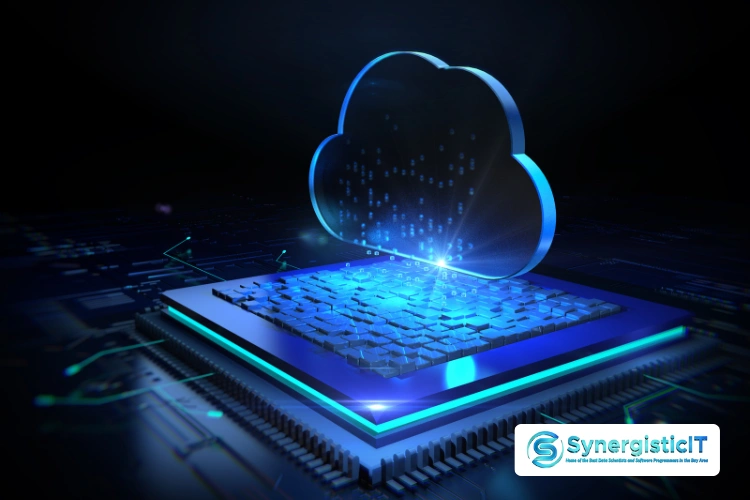AWS Interview Questions and Answers- Part 2
LISTEN TO THE AWS FAQs LIKE AN AUDIOBOOK
 If you are going to an AWS interview and don’t know where to start, refer to our interview guide. AS AWS is one of the biggest cloud computing service providers, there are plenty of opportunities for those who have in-depth AWS knowledge.
If you are going to an AWS interview and don’t know where to start, refer to our interview guide. AS AWS is one of the biggest cloud computing service providers, there are plenty of opportunities for those who have in-depth AWS knowledge.
AWS knowledge is important for roles such as a Solutions Architect, Cloud Developer, or SysOps Administrator. Our guide will help you understand the AWS core services and architecture. With about 100 AWS interview questions, this page is perfect for you to prepare for AWS interviews.
From beginner to advanced, these questions cover topics like EC2, S3, Lambda, IAM, and VPC, etc. The answers are given with each question to practice the answers to respond confidently. So, let’s practice these AWS interview questions and sharpen your knowledge.
Answer:
A buffer plays a vital role in AWS by synchronizing different components and enhancing their elasticity to handle sudden bursts of load or traffic. It helps create a balance between various elements, ensuring they function consistently and process requests at a similar rate, resulting in faster and more efficient service delivery.
Answer:
An AMI (Amazon Machine Image) includes the following elements:
- A template of the source volume for the instance.
- Launch permissions that determine which AWS accounts can use the AMI to launch instances.
- A mapping of the base design that defines the connections to be made with the instance during its launch.
Answer:
Provisioned IOPS is an EBS volume type designed to deliver high performance for I/O-intensive workloads. It is particularly beneficial for database applications that require consistent and fast response times. With Provisioned IOPS, you can specify both the volume size and the desired volume performance to ensure consistent performance throughout the volume’s lifespan.
Answer:
To ensure data security during transit within the cloud, it is important to prevent unauthorized access or leakage of information. One approach is to segregate the data from other companies’ data and encrypt it using approved methods, while also safeguarding the security key across various storage locations in the cloud.
Answer:
The layers of cloud computing include:
- PaaS (Platform as a Service)
- IaaS (Infrastructure as a Service)
- SaaS (Software as a Service)
- FaaS (Function as a Service)
Answer:
The main features of cloud computing include:
- Rapid provisioning of computing resources on a large scale.
- Location independence enables access to resources from anywhere with an internet connection.
- Unlimited storage capacity, eliminating physical device constraints.
- Multi-Tenancy, allowing multiple users to share resources.
- Simplified data backup and disaster recovery.
- Scalability enables businesses to scale resources as needed.
Answer:
Non-regional AWS services include:
- CloudFront
- IAM (Identity and Access Management)
- Route 53
- Web Application Firewall
Answer:
Cloud architecture comprises the following layers:
- CLC (Cloud Controller)
- Cluster Controller
- SC (Storage Controller)
- NC (Node Controller)
- Walrus
Answer:
Storage in an instance store is temporary and can be lost due to instance stops, terminations, or hardware failures. In contrast, data stored in EBS is retained for longer periods and persists even if the instance is stopped or terminated. EBS data can be backed up using EBS snapshots, attached to other instances, and encrypted for enhanced security.
Answer:
Amazon S3 (Simple Storage Service) offers the following Storage Classes:
- S3 Intelligent-Tiering
- S3 Standard
- S3 Standard-Infrequent Access (S3 Standard-IA)
- S3 One Zone-Infrequent Access (S3 One Zone-IA)
- S3 Glacier instant retrieval
- S3 Glacier flexible retrieval
- S3 Glacier deep archive
- S3 Outposts
Answer:
Elastic Transcoder is an Amazon media transcoding service that facilitates the conversion of media files, such as videos, into different formats and resolutions. This enables the adaptation of media content for various devices like phones, laptops, and more.
Answer:
Amazon VPC, which stands for Amazon Virtual Private Cloud (VPC), is a service that grants you control over your virtual private cloud environment. With VPC, you can design and customize your own virtual network, including resource placement, connectivity, and security. It allows you to add Amazon EC2 instances and Amazon Relational Database Service (RDS) instances based on your specific requirements. Moreover, VPC enables you to define communication between different VPCs, regions, and availability zones within the cloud.
Answer:
AWS Lambda is a serverless and event-driven computing service provided by Amazon Web Services. It enables the execution of code without the need for server provisioning or management. AWS Lambda functions can be triggered by a variety of AWS services and Software-as-a-Service (SaaS) applications. It offers excellent scalability, allowing the execution of code in response to events, and facilitates decoupled communication between various services.
Answer:
Classification is used when your target is categorical, while regression is used when your target variable is continuous. Both classification and regression belong to the category of supervised machine learning algorithms.
Answer:
Auto Scaling provides several advantages, including:
- Better availability: Auto Scaling automatically adjusts the number of instances based on demand, ensuring that the application can handle varying levels of traffic without downtime.
- Improved fault tolerance: By distributing traffic across multiple instances, Auto Scaling enhances the fault tolerance of an application. If any instance fails, the workload is automatically shifted to other healthy instances.
- Enhanced cost management: Auto Scaling optimizes resource allocation by automatically scaling the number of instances up or down as required. This helps to reduce unnecessary expenses by aligning resources with demand.
Answer:
Amazon EC2 (Elastic Compute Cloud) is a web service that provides resizable compute capacity and enables the hosting of applications. It allows users to run applications on virtual servers, supports both Windows and Linux environments, and can handle various programming languages.
On the other hand, Amazon S3 (Simple Storage Service) is a data storage service designed for storing and retrieving large amounts of data. It functions through a REST interface and provides highly scalable, durable, and secure object storage in the cloud.
Answer:
Yes, Amazon S3 can be used in conjunction with EC2 instances. Developers can leverage the highly scalable, fast, and reliable data storage infrastructure of Amazon S3 to store and retrieve data for their applications running on EC2 instances. This allows seamless integration of data storage capabilities into the EC2 environment.
Answer:
Geo Restriction, also known as geoblocking, is a feature of Amazon CloudFront that enables you to restrict access to content based on geographic locations. It allows you to prevent users from specific regions or countries from accessing the content you distribute through a CloudFront web distribution. This can be useful for controlling content availability and complying with regional licensing or distribution agreements.
Answer:
Yes, it is possible. To establish a connection between a corporate data center and the Amazon Cloud. This can be achieved by setting up a Virtual Private Network (VPN) connection between the company’s network and the Virtual Private Cloud (VPC) in AWS. This connection allows for secure and seamless interaction between the company’s resources and the EC2 instances within the VPC, making it appear as an extension of the existing network.
The primary private IP address of an EC2 instance remains attached to the instance throughout its lifetime and cannot be changed. However, secondary private IP addresses can be unassigned, assigned to other interfaces or instances, or moved between interfaces or instances at any point, providing flexibility in managing IP addressing within a VPC.

